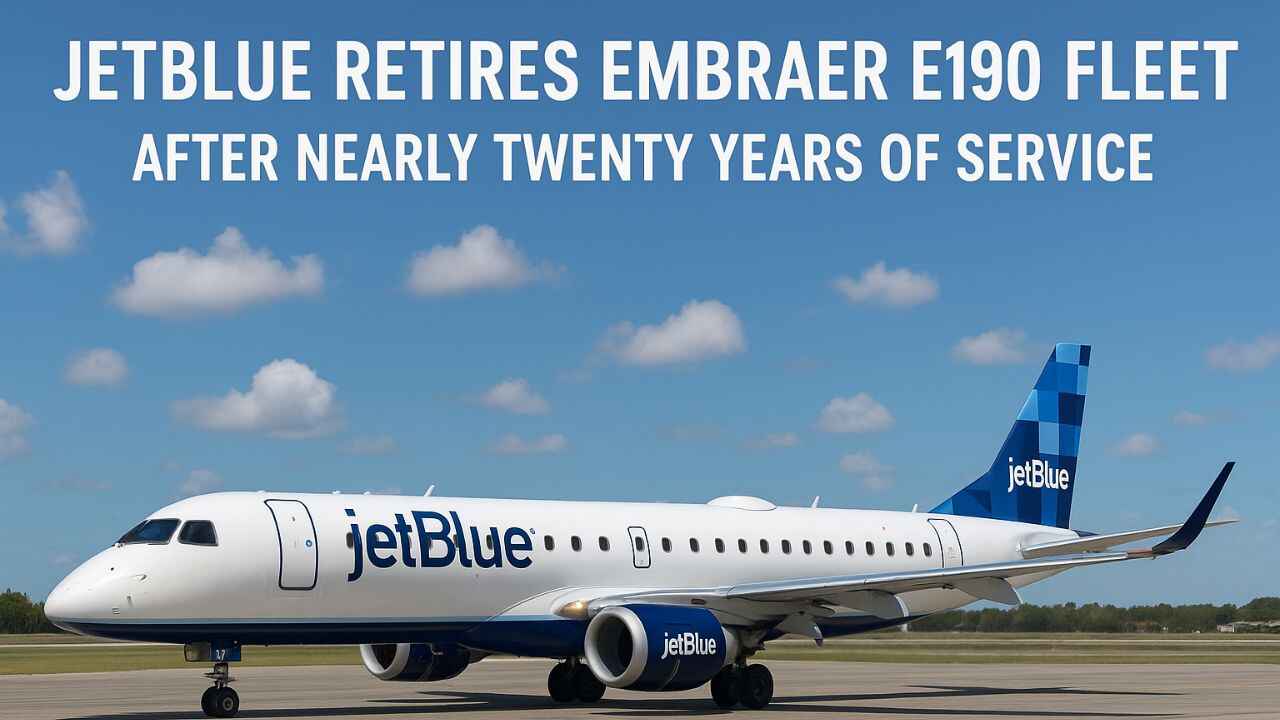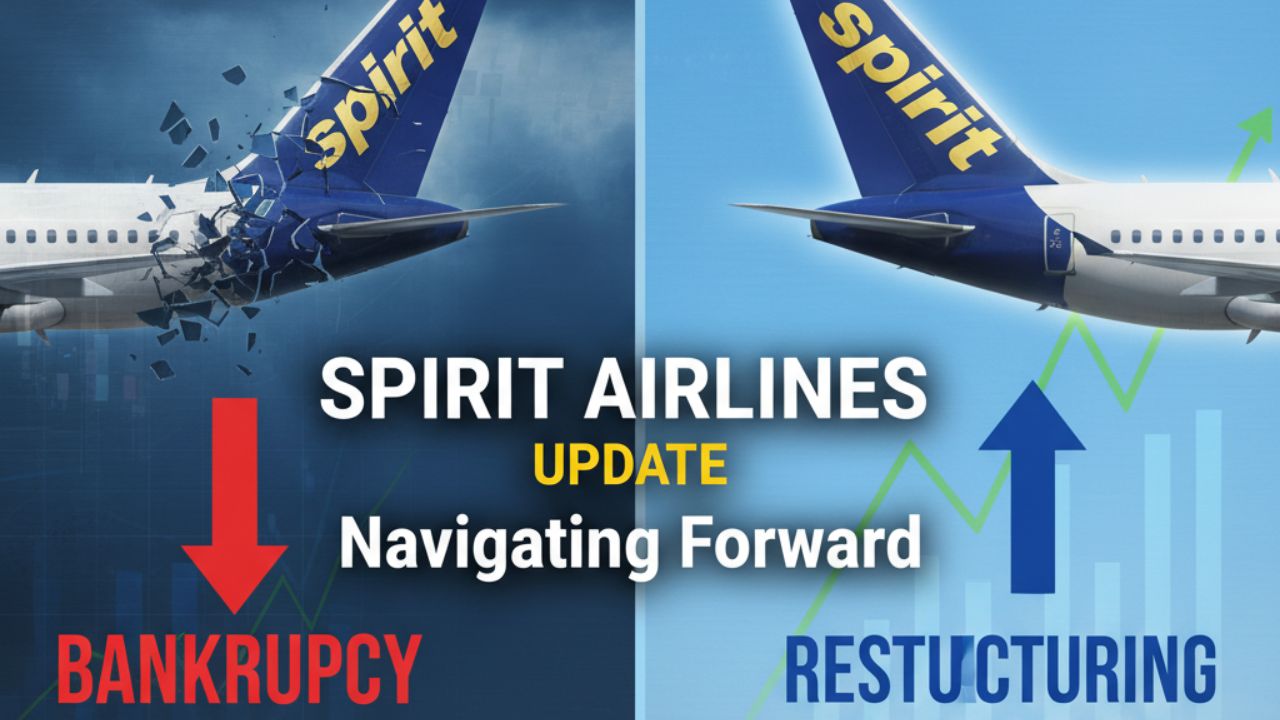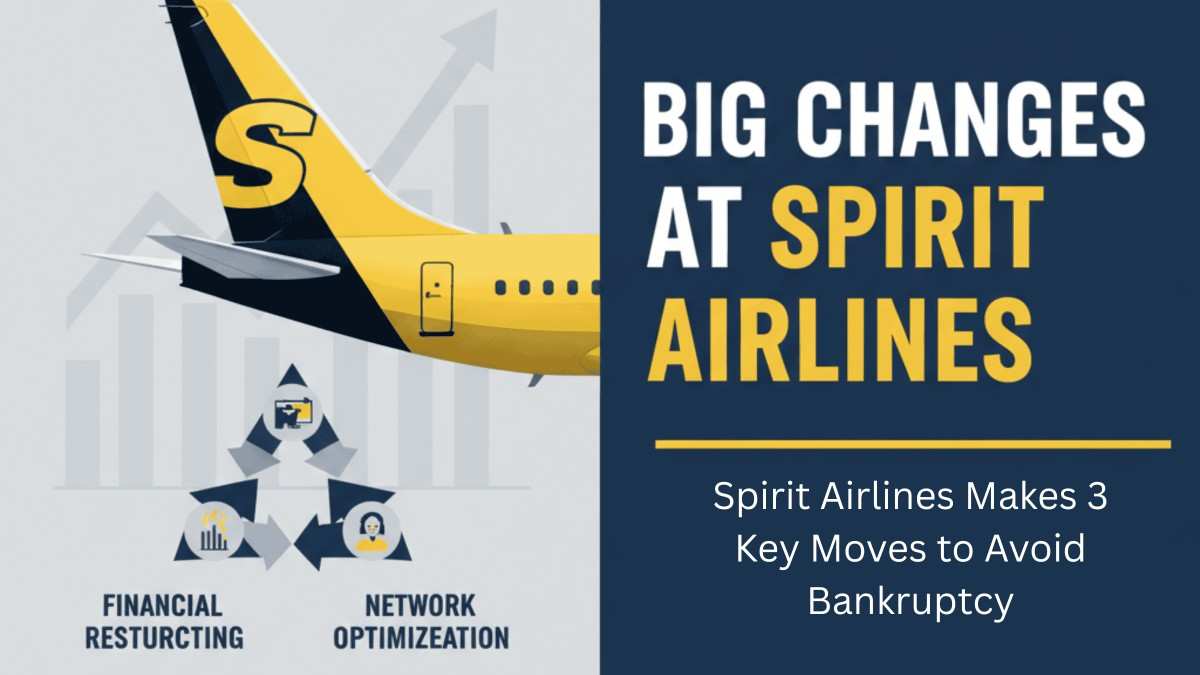
JetBlue Airlines waved goodbye to one of its oldest JetBlue E190s. At New York's JFK airport on the bright day of September, the crew of JetBlue gathered and hugged each other and simply read thank you E190. The crew gathered like it was a family reunion.
This flight was not just a shuttle run to Boston. It was the end of the chapter on aircraft E190.
The Plane With a Personality
The Embraer E190 was never JetBlue’s biggest jet, nor its flashiest. But for nearly twenty years, it was its most human.
With 100 seats—just aisles and windows, no middle misery—it gave regional flying dignity. Customers remembered stepping on board and thinking: Wait, this feels roomy. Live TV flickered at every seatback, a little slice of entertainment at 35,000 feet. Pilots called it nimble. Crews called it cozy. Passengers just called it comfortable.
It was the “little jet that could.” The E190 has been used by JetBlue for reaching smaller airports, route adjustments, and connections between New York and Boston. While the Airbus A329 is the mainstay of JetBlue’s fleet, the E190 has been the operational backbone.
A Bookending Flight
The story began in 2005, when JetBlue’s first E190 flight connected New York and Boston. On its final day in 2025, the circle closed: the same route, the same two cities, and the same man at the controls—Warren Christie, JetBlue’s Chief Operating Officer, who flew that inaugural E190 nearly 20 years ago.
“It feels like flying with an old friend,” Christie told the cabin before pushback. “This plane taught us how to grow. Today, we thank it and let it rest.”
The passengers cheered. Some clapped, some wiped their eyes. The E190 hadn’t just carried bodies from one airport to another. It had carried years.
Inside the Farewell Flight
Boarding felt more like stepping into a scrapbook than an airplane.
A couple showed fellow passengers a photo of themselves on their honeymoon—on this very aircraft type. An aviation blogger ticked off stats: “My 100th E190 ride.” A retired crewmember wore her original JetBlue uniform, beaming with nostalgia.
At cruising altitude, the atmosphere was celebratory but tender. Flight attendants passed out commemorative pins. Conversations spilled across aisles. The aircraft announcement that the time had reached halfway to Boston gave way to a thunderous applause from the audience there. Everybody aboard clapped in appreciation.
The cabin lights dimmed, except not as low as usual. The engines hummed steadily, almost proud. If a machine could know it was saying goodbye, the E190 seemed to know.
Enter the Airbus A220: A Star Takes the Stage
The E190’s retirement wasn’t just a goodbye. It was also a coronation. JetBlue had just taken delivery of its 50th Airbus A220-300, a milestone representing the future.
Where the E190 offered intimacy, the A220 offers ambition. With 140 of JetBlue’s widest-ever seats, bins built for real bags, panoramic windows, and seatback entertainment powered by lightning-fast Fly-Fi, the A220 feels like the future of boarding early.
Operationally, it’s a game-changer. Longer range means coast-to-coast flights. Smarter fuel burn means lower costs and a greener footprint. For JetBlue, it’s not just a jet. It’s a runway into the next decade.
If the E190 was the actor who carried the play through its middle acts, the A220 is the bright young lead stepping onto the stage.
What Crews Will Miss
For crews, the E190 was personal.
“It flew like a sports car,” one captain said. “Quick, nimble—you felt connected.”
“You learned names,” a flight attendant added. “On a 100-seat jet, you weren’t just serving rows. You were connecting with people.”
There were memories by the ground staff of pesky things-an odd squeak during pushback, a door that just would not close, and needed some siding force.
The A220 has already begun to develop its own mythology: the hush of its engines, the glow of the LEDs, and just the sight of its passengers entering and whispering, wow. But crews know nothing will replace your “first love.”
A Fleet Simplified, a Future Amplified
With the E190 retired, JetBlue now flies just two aircraft families: the A220 and the A320 series. It is something slick for sure.
For JetBlue customers, it means reliable schedules and a consistent on-board experience.
For JetBlue, it is about lower costs and the added flexibility to grow. For the planet, it means fewer emissions.
This isn’t just housekeeping—it’s the backbone of JetBlue’s JetForward strategy, the playbook for the airline’s next era.
The Last Taxi
As per the official site news published on the 9th of September 2025, flight e190 took its last trip to Boston. In Boston, as Flight 190 taxied to the gate, passengers stayed seated longer than usual. Some touched the cabin wall on their way out. Others lingered to snap one last photo.
Ground crews gave one last salute; the jet exhaled one final sigh of compressed air and fell silent. Its working days were done.
Tomorrow, the A220 would take the spotlight. But for one morning, the E190 owned the stage.
Not Just an Airplane
Airlines retire planes all the time. But the E190’s farewell reminded everyone that some machines earn more than a maintenance log—they earn affection.
It was the jet of honeymoons, job interviews, family visits, and quick getaways. It was the jet that made JetBlue feel personal.
As one passenger whispered while stepping off the plane: “Funny, isn’t it? We’re not really mourning an airplane. We’re mourning the years of our lives that it carried.”





